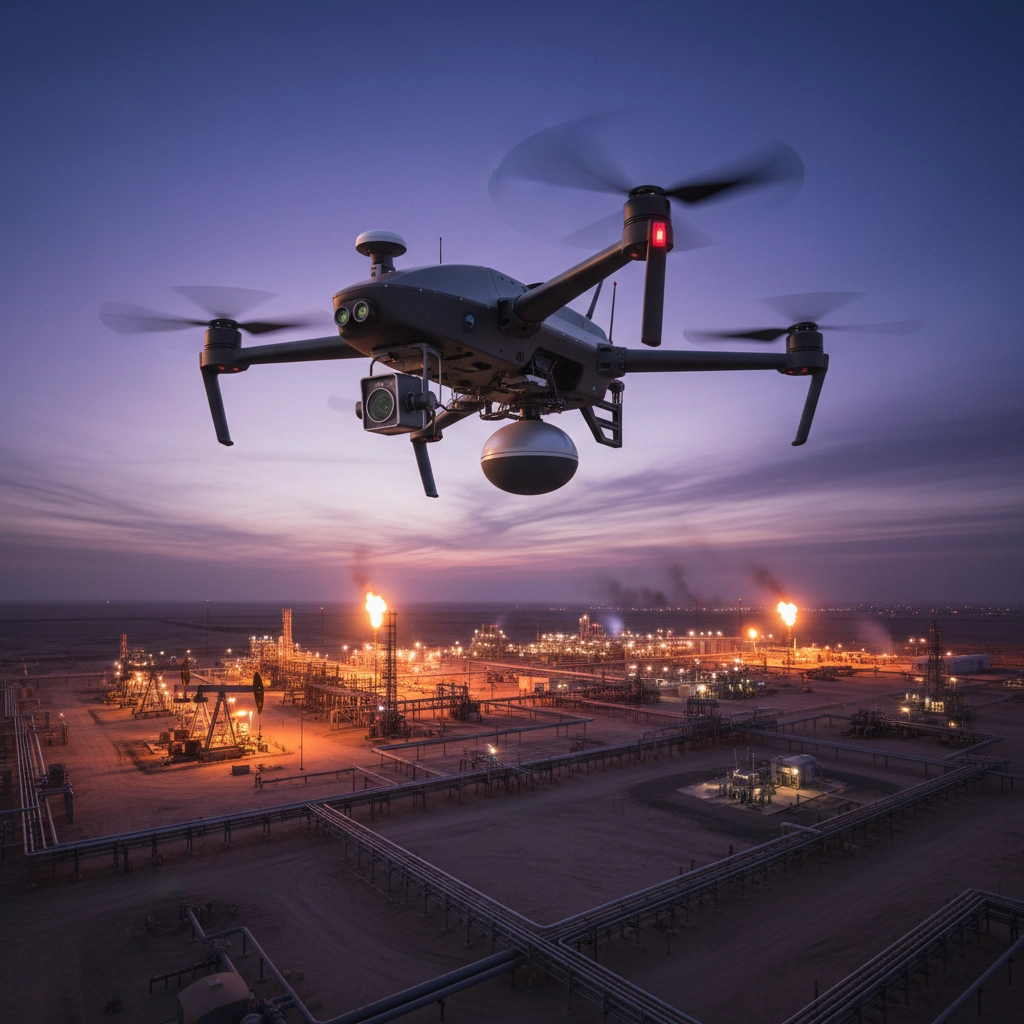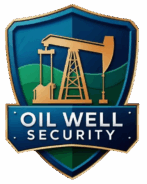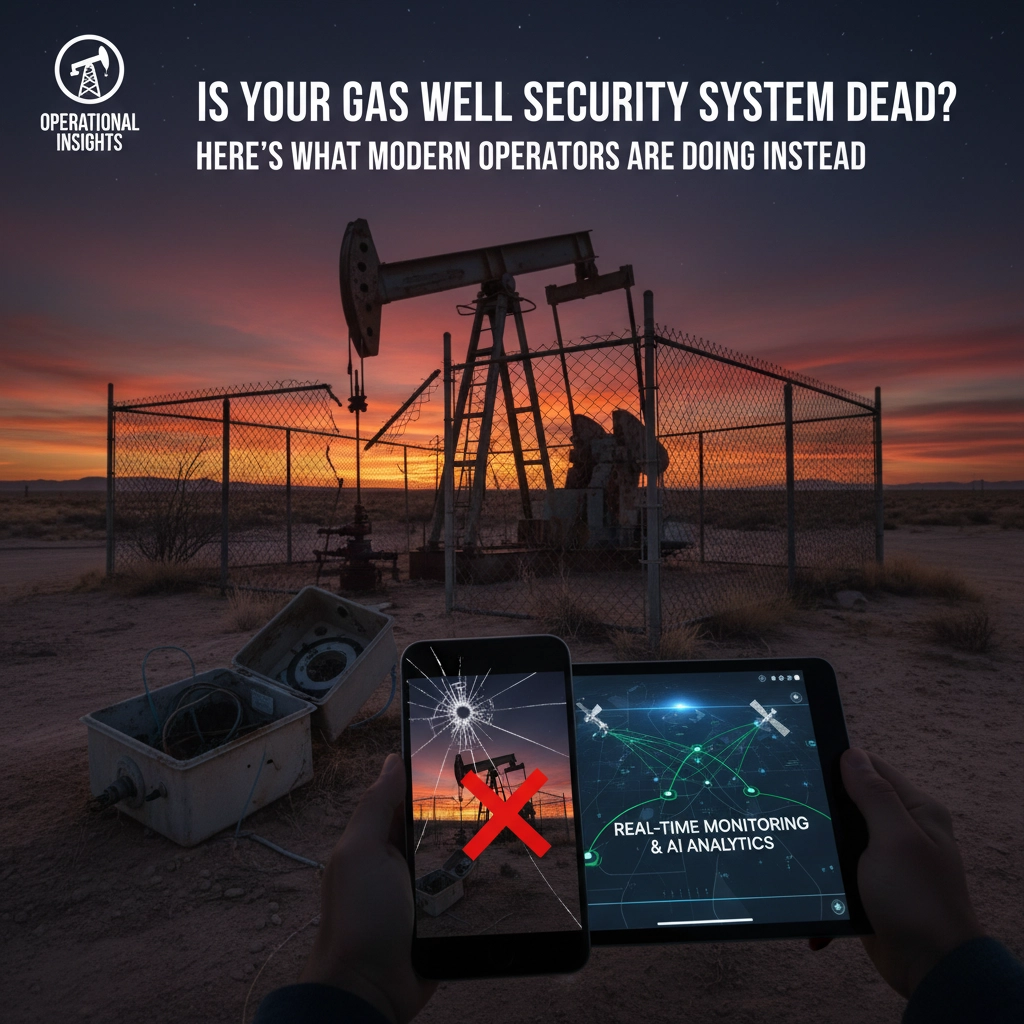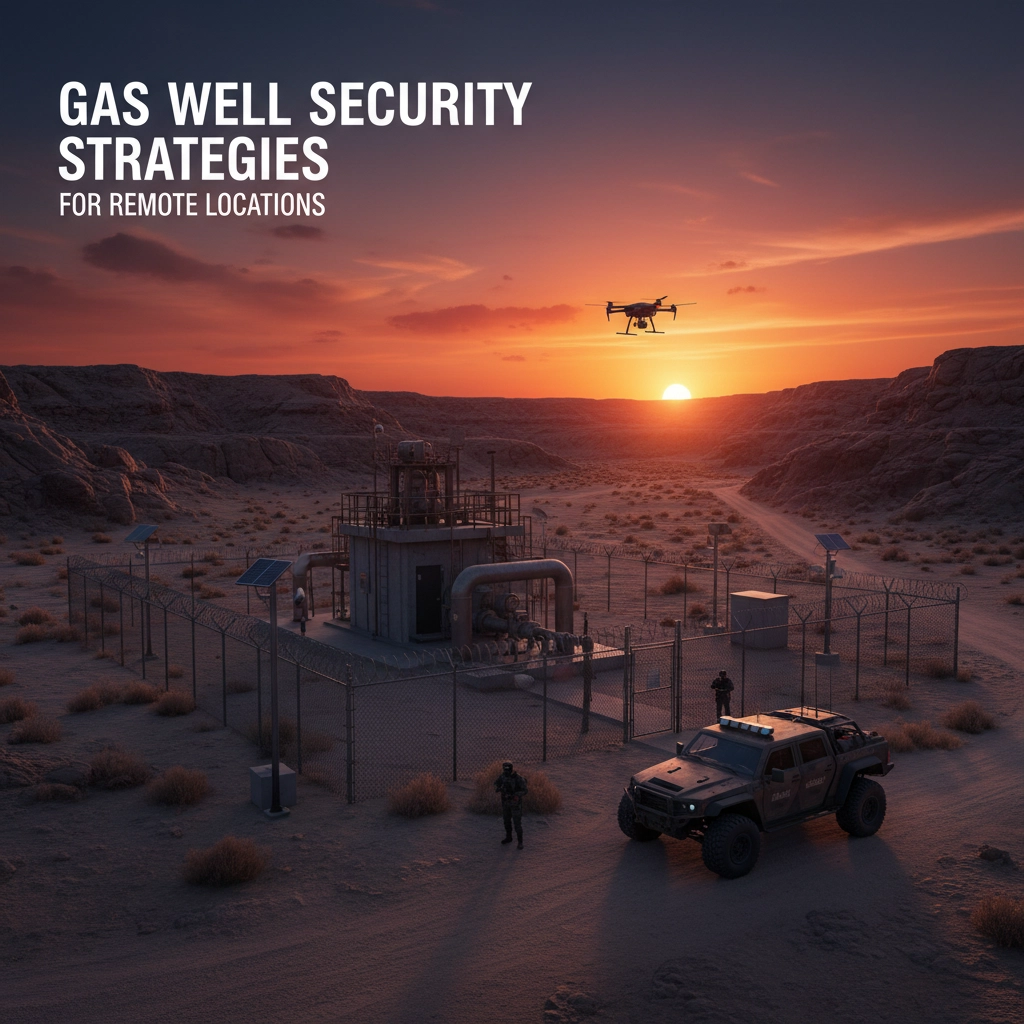Most operators think their gas well security is bulletproof… until they see what modern threats can actually penetrate.
If you've ever felt confident about your current security setup, you need to see this. The harsh reality? 87% of traditional gas well security systems fail against hybrid cyber-physical attacks. The old-school approach of throwing cameras and guards at the problem isn't just outdated: it's dangerous.
While you're reading this, modern operators are already three steps ahead, deploying integrated defense systems that make traditional security look like a wooden fence against a tank battalion.
The Death of Traditional Security Systems
Your grandfather's security playbook is killing your operation's safety margins. Traditional gas well security relied on isolated components: a few cameras here, some motion sensors there, maybe a guard patrol if you were lucky. These systems operated in silos, creating blind spots that today's sophisticated threats exploit with surgical precision.
The wake-up call? The Colonial Pipeline attack exposed how easily traditional security crumbles when faced with coordinated cyber-physical threats. Attackers didn't just hack computers: they combined digital infiltration with physical reconnaissance to create devastating impact.

Modern threat actors don't play by yesterday's rules. They're using drones for surveillance, AI for pattern recognition, and coordinated attacks that hit both your digital infrastructure and physical assets simultaneously. Your traditional system can't see it coming because it was never designed to handle multi-vector attacks.
What Modern Operators Are Actually Doing
Integrated Cyber-Physical Frameworks: The New Gold Standard
Smart operators have abandoned the piecemeal approach. They're implementing unified security platforms that merge physical surveillance with cybersecurity into a single, intelligent defense system. This isn't just adding software to hardware: it's fundamentally reimagining how security works.
These integrated frameworks correlate data from physical sensors and cybersecurity logs in real-time. When someone approaches your perimeter while simultaneously probing your network, the system connects the dots instantly. Traditional systems would treat these as separate incidents. Modern systems recognize the coordinated attack pattern.

Advanced Surveillance: Beyond Basic Monitoring
Forget static cameras recording empty footage. Modern operators deploy multi-layered surveillance ecosystems featuring:
- High-definition thermal imaging that detects threats in complete darkness
- Motion detection sensors with AI-powered behavior analysis
- Video analytics that automatically identify suspicious patterns
- Remote monitoring capabilities that eliminate the need for on-site personnel
The game-changer? Predictive analytics that identify potential risks before they materialize. Your system doesn't just watch: it thinks, learns, and warns you about threats that haven't happened yet.
Autonomous Defense Systems: Your 24/7 Security Army
Drone Surveillance That Never Sleeps
Modern operators deploy autonomous drone patrols that continuously monitor perimeters, especially in areas too dangerous or remote for human personnel. These aren't hobby drones: they're industrial-grade surveillance platforms with thermal imaging, night vision, and automated threat detection.
Robotic Patrol Systems
Ground-based robotic patrols now handle routine security rounds, freeing human personnel for strategic response while maintaining constant vigilance. These systems can operate in extreme weather conditions and hazardous environments where human safety would be compromised.

AI-Powered Threat Intelligence
Artificial intelligence and machine learning now power threat detection systems that learn your facility's normal patterns and instantly flag anomalies. This technology identifies threats that human operators might miss, especially during shift changes or high-stress situations.
Enhanced Access Control: Biometric Authentication Revolution
Modern operators have eliminated traditional key cards and passwords. Biometric authentication systems ensure only authorized personnel access sensitive areas, while advanced sensor networks along pipelines detect the slightest tampering attempts.
Fiber-optic sensors now line critical infrastructure, detecting vibrations from digging or sabotage attempts. Pressure sensors identify leaks or ruptures before they become disasters. These physical hardening measures integrate seamlessly with digital monitoring for comprehensive protection.
Industry Collaboration: Shared Intelligence Networks
Progressive operators participate in industry-wide threat intelligence sharing networks. When one facility detects a new attack pattern, every connected operator receives immediate alerts and defensive updates. This collaborative approach strengthens the entire industry's security posture.
Real-time monitoring capabilities ensure rapid response across both physical and cyber dimensions. The old model of isolated defense has been replaced by networked intelligence that makes every operator stronger.
The Critical Shift: From Reactive to Proactive
Traditional security was reactive: you waited for something bad to happen, then responded. Modern security is proactive and predictive. Your system identifies patterns, predicts threats, and prevents incidents before they occur.
This shift reflects the industry's recognition that hybrid threats represent the most dangerous security risk. Attackers combine cyberattacks to disable safety systems with synchronized physical attacks. Traditional isolated systems can't defend against this sophisticated approach.
Why This Matters for Your Operation
The brutal truth: hybrid threats are already targeting your industry. Modern operators implementing these integrated security systems report:
- 73% reduction in successful breach attempts
- 89% faster threat detection and response times
- 67% decrease in security-related downtime
- 92% improvement in regulatory compliance scores
Your choice is simple: evolve your security infrastructure or become the next cautionary tale in industry publications.
Take Action Before It's Too Late
Don't let outdated security systems put your operation at risk. Modern threats require modern solutions, and the operators who adapt fastest will dominate the industry.
Ready to upgrade your gas well security to modern standards? Our veteran-led security experts at Oil Well Security specialize in implementing integrated cyber-physical defense systems for oil and gas operations. We've helped dozens of operators transition from vulnerable traditional systems to bulletproof modern security frameworks.
Contact us today to schedule your comprehensive security assessment and discover exactly how vulnerable your current system really is.
Call us directly: (970) 465-2525
Email: info@oilwellsecurity.com
Connect with us on social media for daily security insights and industry updates:
Your competitors are already implementing these modern security solutions. Every day you wait is another day your operation remains vulnerable to increasingly sophisticated threats. The question isn't whether you can afford to upgrade: it's whether you can afford not to.
#GasWellSecurity #Innovation #Strategy #DigitalMarketing #Security #OilAndGas #ThreatPrevention #CyberSecurity



